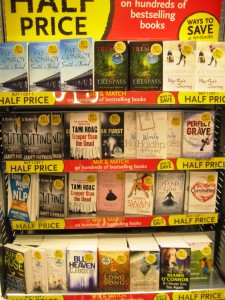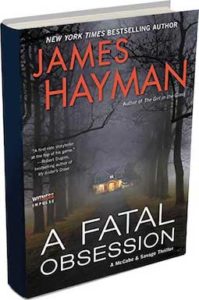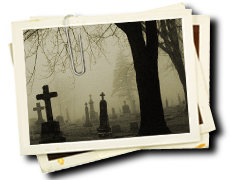The Gigantic Website That Ate Up the World
Tuesday, October 18th, 2011By James Hayman
Decades ago, one of my favorite Bill Cosby skits was called The Gigantic Chicken-Heart That Ate Up The World. Or maybe it wasn’t the world. Maybe it was just The Gigantic Chicken-Heart That Ate Up the New Jersey Turnpike. From a distance of thirty years I can’t quite remember exactly which it ate up but in either case it was something big and indigestible.
These days Amazon is beginning to feel a little too much like that gigantic chicken-heart to me.
As we all know, Amazon created the modern on-line retail model. In the process, it almost single-handedly changed the way readers buy books (online) and the way readers read books (on Kindles). I dare say we’d be hard-pressed to find any reader today who hasn’t at some time or other purchased books from Amazon. And that includes even staunch supporters of local independent booksellers like me.
I’ve always thought the power and appeal of Amazon lay in its role as a ubiquitous product delivery system. A way for readers to find and buy virtually any book by any author anywhere in the world pretty much instantly and usually at a discounted price.
Now, however, it seems the Gigantic Amazon Chicken-Heart has just started devouring another large mouthful of the book world. According to a fascinating article written by David Streitfeld in last Sunday’s New York Times, today’s Amazon is not just competing with bookstores, it’s also started competing with traditional publishers, agents, publicists and reviewers.
In 2011, the company is publishing 122 books in both traditional and electronic formats. It’s also paying some pretty hefty advances for books by name authors. Streitfeld’s article mentions an $800,000 advance paid to actress and director Penny Marshall for an upcoming memoir.
Streitfeld quotes an agent and e-book publisher named Richard Curtis who says: “Everyone’s afraid of Amazon. If you’re a bookstore, Amazon has been in competition with you for some time. If you’re a publisher, one day you wake up and Amazon is competing with you too. And if you’re an agent, Amazon may be stealing your lunch because it is offering authors the opportunity to publish directly and cut you out.”
Streitfeld also quotes an Amazon executive named Russell Grandinetti: “The only really necessary people in the publishing process now,” says Grandinetti, “are the writer and reader…Everyone who stands between those two has both risk and opportunity.”
As a thriller writer, my books (The Cutting, The Chill of Night) have been published by a number of commercial publishers in various countries around the world: St. Martin’s/Minotaur in the US, Penguin in the UK, Random House in Germany among others. In spite of this relative success, I was interested enough by the new Amazon phenomenon that I went to Amazon Author Central to see what I could learn. What I learned was yes, indeed, Amazon can do it all.
I’m writing this blog because I’m not sure how I feel about this agglomeration of power in the hands of one gigantic company.
On the positive side of the ledger, Amazon does help unknown writers get their works out there and helps them attract the attention of readers through its publicity and review services. It also offers writers the promise of larger royalty payments on the books they do sell. And, as always, it offers readers a virtually unlimited choice of books, most delivered to their doorsteps overnight or in two days.
On the negative side, it all feels a little too much like Big Brother. I worry for the survival of independent publishers, independent bookstores and independent agents. I know my agent and editors personally and like and value their opinions. I know my local booksellers and wish them nothing but success. I’d hate to see any or all of them replaced by a website.
You can read the entire Streitfeld piece, “Amazon Signs Up Authors, Writing Publishers Out of Deal” at:
As writers and readers, I’d like to know how you all feel. I invite your comments.


